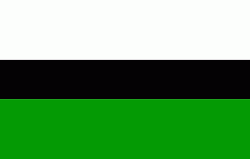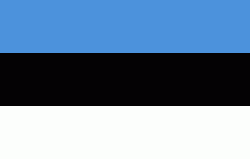Kadrina Parish (Kadrina vald)
 |
 |
The administrative centre is the small borough (alevik) of Kadrina, which has a population of 2,600. Other major populated places are the small borough of Hulja (600 inhabitants) and the villages of Kihlevere (200 inhabitants), Vohnja (200 inhabitants) and Viitna (100 inhabitants). There are 32 villages in total.
The northern border of the municipality is also the southern border of Lahemaa National Park.
The Tallinn–Narva road (nr 1, part of E20) and the Tallinn–Saint Petersburg railway run through Kadrina Parish.
Hulja, Kadrina
* Small boroughs:
Ama, Arbavere, Hõbeda, Härjadi, Jõepere, Jõetaguse, Jürimõisa, Kadapiku, Kallukse, Kihlevere, Kiku, Kõrveküla, Lante, Leikude, Loobu, Läsna, Mõndavere, Mäo, Neeruti, Ohepalu, Orutaguse, Pariisi, Põima, Ridaküla, Rõmeda, Salda, Saukse, Sootaguse, Tirbiku, Tokolopi, Udriku, Uku, Undla, Vaiatu, Vandu, Viitna, Vohnja, Võduvere, Võipere
* Villages:
Map - Kadrina Parish (Kadrina vald)
Map
Country - Estonia
 |
 |
| Flag of Estonia | |
The land of what is now modern Estonia has been inhabited by Homo sapiens since at least 9,000 BC. The medieval indigenous population of Estonia was one of the last pagan civilisations in Europe to adopt Christianity following the Papal-sanctioned Livonian Crusade in the 13th century. After centuries of successive rule by the Teutonic Order, Denmark, Sweden, and the Russian Empire, a distinct Estonian national identity began to emerge in the mid-19th century. This culminated in the 24 February 1918 Estonian Declaration of Independence from the then warring Russian and German Empires. Democratic throughout most of the interwar period, Estonia declared neutrality at the outbreak of World War II, but the country was repeatedly contested, invaded and occupied, first by the Soviet Union in 1940, then by Nazi Germany in 1941, and was ultimately reoccupied in 1944 by, and annexed into, the USSR as an administrative subunit (Estonian SSR). Throughout the 1944–1991 Soviet occupation, Estonia's de jure state continuity was preserved by diplomatic representatives and the government-in-exile. Following the bloodless Estonian "Singing Revolution" of 1988–1990, the nation's de facto independence from the Soviet Union was restored on 20 August 1991.
Currency / Language
| ISO | Currency | Symbol | Significant figures |
|---|---|---|---|
| EUR | Euro | € | 2 |
| ISO | Language |
|---|---|
| ET | Estonian language |
| RU | Russian language |















